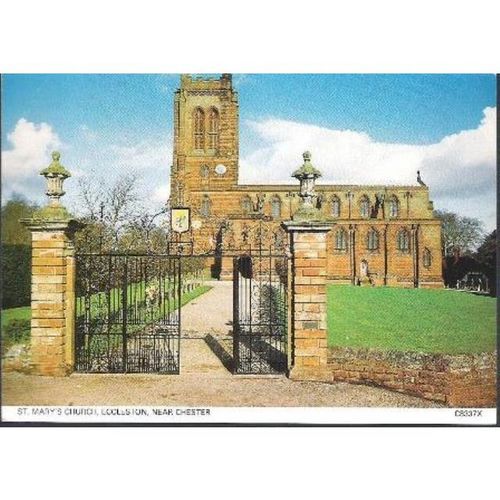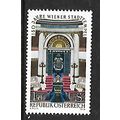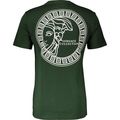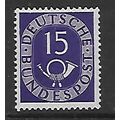Eccleston, Cheshire nr Chester - St. Mary's Church - Judges postcard c.1980s
- Condition : Used
- Dispatch : 2 Days
- Brand : None
- ID# : 140990320
- Quantity : 1 item
- Views : 249
- Location : United Kingdom

- Seller : justthebook (+1703)
- Barcode : None
- Start : Mon 20 Jul 2015 17:17:58 (BST)
- Close : Run Until Sold
- Remain : Run Until Sold
More Listings from This Seller view all
Seller's Description
- Postcard
- Picture / Image: St. Mary's Church, Eccleston, near Chester, Cheshire
- Publisher: Judges of Hastings (C8337X)
- Postally used: no
- Stamp: n/a
- Postmark(s): n/a
- Sent to: n/a
- Notes / condition: slightly bumped corner
Please ask if you need any other information and I will do the best I can to answer.
Image may be low res for illustrative purposes - if you need a higher definition image then please contact me and I may be able to send one. No cards have been trimmed (unless stated).
------------------------------------------------
Postage & Packing:
Postage and packing charge should be showing for your location (contact if not sure).
No additional charges for more than one postcard. You can buy as many postcards from me as you like and you will just pay the fee above once. Please wait for combined invoice. (If buying postcards with other things such as books, please contact or wait for invoice before paying).
Payment Methods:
UK - PayPal, Cheque (from UK bank) or postal order
Outside UK: PayPal ONLY (unless otherwise stated) please. NO non-UK currency checks or money orders (sorry).
NOTE: All postcards are sent in brand new stiffened envelopes which I have bought for the task. These are specially made to protect postcards and you may be able to re-use them. In addition there are other costs to sending so the above charge is not just for the stamp!
I will give a full refund if you are not fully satisfied with the postcard.
----------------------------------------------
Text from the free encyclopedia WIKIPEDIA may appear below to give a little background information (internal links may not work) :
*************
Eccleston is a civil parish and village in the unitary authority of Cheshire West and Chester and the ceremonial county of Cheshire, and close to Chester. According to the 2001 Census, the population of the entire civil parish was 184.[1] The village is situated on the estate of the Duke of Westminster who maintains his ancestral home at nearby Eaton Hall.
is believed that the name of the village derives from the Latin for 'Meeting Place'
Formerly a township in Broxton Hundred, it includes the hamlets of Belgrave and Morris Oak. The population was 199 in 1801, 289 in 1851, 320 in 1901 and 272 in 1951.[2]
The church at Eccleston is called St. Mary's Church. It was built at the expense of the Duke of Westminster and cost £40,000 in 1899. It was built on the site of an earlier church that was constructed in 1809. Part of the churchyard is unusual in that it is circular in shape, which indicates pagan origins. In 1929 an excavation revealed 20 bodies which are believed to date from 390 AD. They are the earliest known Christian burials in Cheshire.[3]
Two War Memorials exist within the Church, one of Bronze recording those that fell during World War I and a wooden memorial recording those that fell during World War II. In the churchyard are ten CWGC-registered war graves, seven from World War I and three from World War II.[4]
The Churchyard is also the resting place of Alfred Ernest Ind VC, who died on 29 November 1916.[5] Ind was a Farrier Sergeant in the Royal Horse Artillery. He was awarded the Victoria Cross on 20 December 1901 at Orange River, South Africa during the Second Boer War.
St Mary's Church, Eccleston, is in the village of Eccleston, Cheshire, England, on the estate of the Duke of Westminster south of Chester. The church is designated by English Heritage as a Grade I listed building.[1] It is an active Anglican parish church in the diocese of Chester, the archdeaconry of Chester and the deanery of Chester. Its benefice is combined with that of St Mary, Pulford.[2] The Dukes of Westminster are buried in the church grounds.
There was a medieval church on the site which was entirely rebuilt in 1809 by William Porden for Earl Grosvenor. A chancel was added in 1853. This was replaced by the present church in 1899, designed by G. F. Bodley for the 1st Duke of Westminster at a cost of £40,000 (£3.93 million today).[3][4]
The church is built in red ashlar sandstone. Its plan consists of a west tower, a continuous six-bay nave, a chancel with a clerestory, north and south aisles, and north and south porches.[1] A long vestry block projects to the north. The tower has long bell-openings, irregular buttresses and an embattled top. Canopied niches above the south door contain statues.[5] The church is considered to be an example of Bodley's mature style anticipating features of Liverpool Cathedral.[1]
The authors of the Buildings of England series are impressed by the furnishings of the church, in particular the reredoses by Farmer and Brindley, the chancel screens, the organ case and the bench ends. All the stained glass is by Burlison and Grylls.[5] The font is made from Thessaly marble, and has a lifting oak cover decorated with the carvings of eight saints. In the baptistry is part of a memorial to the Grosvenor family dated 1624 that has been moved from the old church. The east end of the south aisle is occupied by the Grosvenor Chapel. Above its altar are the carved figures of Jesus, Saint Augustine and Saint Paulinus.[6] In the church is a monument to the memory of the 1st Duke of Westminster dated 1901, which consists of a tomb-chest and canopy designed by Bodley with an effigy by Farmer and Brindley, sculpted by Léon-Joseph Chavalliaud.[5] Opposite on the south wall is a bronze bust to the 2nd Duke. Elsewhere in the church are memorials to the 4th Duke, and to Captain Hugh William Grosvenor, who was killed in the First World War.[6] The organ was built in 1899 by Gray & Davison. It was modified around 1910 by Henry Poyser and further modified in 1984.[7] There is a ring of eight bells which were cast by John Taylor & Co in 1899.[8]
The churchyard has an avenue of lime trees. The gates date from the early 18th century. They were made by the Davies Bros., and were originally at Emral Hall, Flintshire. In the northeast part of the old churchyard is a fragment of Porden's former church on the site which was retained as a ""picturesque feature"".[5] This consists of a sandstone wall with the lower parts of two windows measuring about 60 feet (18 m) long by 18 feet (5 m) high. It is designated as a Grade II listed building.[9] Also listed at Grade II are the walls and gates between the old churchyard and Old Church Lane.[10]
The churchyard contains ten CWGC registered war graves, seven from World War I and three from World War II,[11] and besides the grave of the Boer War Victoria Cross recipient, Farrier Sergeant Alfred Ernest Ind (died 1916).[12]
type=printed
city/ region=chester
period=post-war (1945 - present)
postage condition=unposted
number of items=single
size=continental/ modern (150x100mm)
Listing Information
| Listing Type | Gallery Listing |
| Listing ID# | 140990320 |
| Start Time | Mon 20 Jul 2015 17:17:58 (BST) |
| Close Time | Run Until Sold |
| Starting Bid | Fixed Price (no bidding) |
| Item Condition | Used |
| Bids | 0 |
| Views | 249 |
| Dispatch Time | 2 Days |
| Quantity | 1 |
| Location | United Kingdom |
| Auto Extend | No |



 for 1 item(s)
for 1 item(s)

















